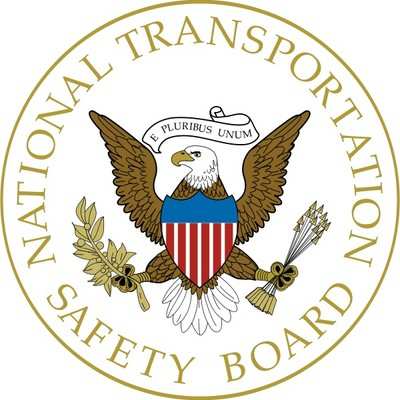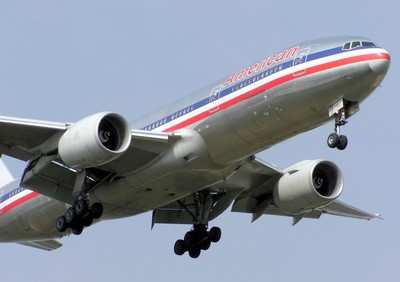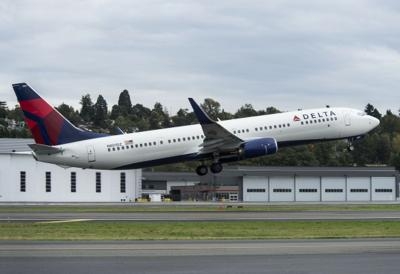Board Cites AAL-Delta JFK Runway Incursion
The National Transportation Safety Board (NTSB) has issued a statement pertaining to the use of recorded interviews in aviation accident investigations.

The Board’s statement cites a 13 January 2023 incident in which American Airlines Flight 106—a Boeing 777-200 departing New York’s John F. Kennedy International Airport (JFK) bound for London’s Heathrow Airport (LHR)—crossed JFK’s Runway 4L without Air Traffic Control (ATC) clearance. The resultant runway incursion compelled the flight-crew of Delta Air Lines Flight 1943, a Boeing 737-900ER departing for the Dominican capital city of Santo Domingo (SDQ) to abort a take-off on JFK Runway 4L.
The American Airlines flight had been instructed by JFK ground control to proceed to Runway 4L via taxiway K. However, when the American 777 reached the intersection, the aircraft continued on to taxiway J, crossing runway Runway 4L without clearance, and in so doing placing itself in the path of the oncoming Delta 737—which had begun its take-off roll and attained a speed of eighty-knots.
A JFK air traffic controller immediately canceled Delta 1943’s take-off clearance, and the 737 flight-crew commenced aborting the take-off, but not before the aircraft had attained a speed of nearly one-hundred-knots. The perspicacity and skill of the air traffic controller and the Delta flight-crew saw Flight 1943 brought to a controlled halt approximately five-hundred-feet south of taxiway J.
The NTSB subsequently conducted interviews with JFK Air Traffic Controllers, received statements from the Delta flight-crew, and retrieved the Cockpit Voice Recorder (CVR) and Flight Data Recorder (FDR) data from both aircraft. Written statements from the Delta crew were reviewed, and the board determined in its preliminary report that subject statements contained sufficient information for NTSB investigative purposes.

Contrariwise, the CVR data from American Airlines Flight 106 was unavailable to investigators insomuch as contemporary cockpit voice recorders archive only two total hours of audio—after which they overwrite the old data with the subsequent two hours of cockpit dialogue. Ergo, the AAL Flight 106 CVR record of the JFK runway incursion recording was overwritten during the approximately seven-hour flight to London.
The NTSB, in the absence of AAL Flight 106’s CVR data, requested the aircraft’s flight-crew to submit testimonials of their recollections of the departure incident. The Board contended that such transcripts are of particular importance in the absence of germane cockpit voice recordings.
On three separate occasions, the NTSB attempted unsuccessfully to interview the Flight 106 aircrew. Notwithstanding the fact American Airlines cleared the flight-crew’s schedule to ensure their availability, the Flight 106 pilots refused to be interviewed, asserting a collective aversion to having their statements audio-recorded for transcription.
On behalf of the Flight 106 flight-crew, a representative of the Allied Pilots Association—the labor union by which American Airlines pilots are represented—informed the NTSB that the crew would not consent to participate in audio-recorded interviews. The union argued interviews were vital to continuing aviation safety, but objected to the use of electronic recording devices, stating:
"We join in the goal of creating an accurate record of all interviews conducted in the course of an investigation. However, we firmly believe the introduction of electronic recording devices into witness interviews is more likely to hinder the investigation process than it is to improve it.
"Not only may the recording of interviews lead to less candid responses from those witnesses who may choose to proceed under such requirements, but the existence and potential availability of interview recordings upon conclusion of an investigation will tend to lead many otherwise willing crew members to elect not to participate in interviews at all"

Nevertheless, the NTSB set forth that its investigation of the 13 January JFK runway incursion is largely contingent upon flight-crew testimony, and therefore requires that the American Airlines Flight 106 pilots be interviewed, and their testimony audio-recorded and transcribed by a court reporter for purpose of ensuring the highest possible degree of accuracy, completeness, and efficiency.
The NTSB’s 10 February statement reads:
“When necessary for an investigation, the NTSB records and transcribes interviews to ensure the highest level of accuracy and completeness of this critical evidence. This longstanding practice has included numerous past investigations involving commercial airlines. NTSB investigators frequently use recording devices in interviews, particularly with those who had roles in operating the equipment involved in the accident or incident.
“The audio from the American Airlines Flight 106 CVR was unavailable to investigators because the CVR only records two hours of audio. The recording of the event was overwritten during the AA 106 flight to London which departed shortly after the incursion. The transcripts of each flight crew-member’s account of the activities and conversation leading up to the runway incursion is particularly important in the absence of a cockpit voice recording.
“The NTSB attempted to interview the crew on three separate occasions: virtually on January 25, in person with a court reporter on February 3, and virtually with a court reporter on February 8.
“Although the NTSB offered to both procure a court reporter to produce a verbatim transcript of the interviews and provide the opportunity for each crew-member to review the interview transcripts for accuracy, the American Airlines flight crew-members have so far refused to cooperate with providing recorded interviews. Consequently, on Feb. 10, the NTSB issued subpoenas to each of the three American Airlines flight crew-members to compel them to appear for interviews at NTSB headquarters in Washington D.C. The flight crew-members have seven days to respond to the subpoenas.
“As stated in the preliminary report, American Airlines has cooperated with the investigation and has cleared the flight crew’s schedules to ensure their availability for the interviews.
“Written statements from the Delta crew were reviewed. At this time, it has been determined that their statements contain sufficient information for NTSB investigative purposes given their role in the incident.
“The interview transcripts will serve as the official records of the interviews and will be placed in the public docket.
“The NTSB recommended in 2018 that the Federal Aviation Administration require that commercial air carriers be required to be equipped with CVRs capable of recording at least 25 hours of audio. (See NTSB recommendation A-18-030 and A-18-31).
 ANN's Daily Aero-Term (10.13.25): Homing [ICAO]
ANN's Daily Aero-Term (10.13.25): Homing [ICAO] ANN's Daily Aero-Linx (10.13.25)
ANN's Daily Aero-Linx (10.13.25) ANN FAQ: Q&A 101
ANN FAQ: Q&A 101 NTSB Prelim: CubCrafters Carbon Cub
NTSB Prelim: CubCrafters Carbon Cub ANN's Daily Aero-Term (10.14.25): Severe Icing
ANN's Daily Aero-Term (10.14.25): Severe Icing





